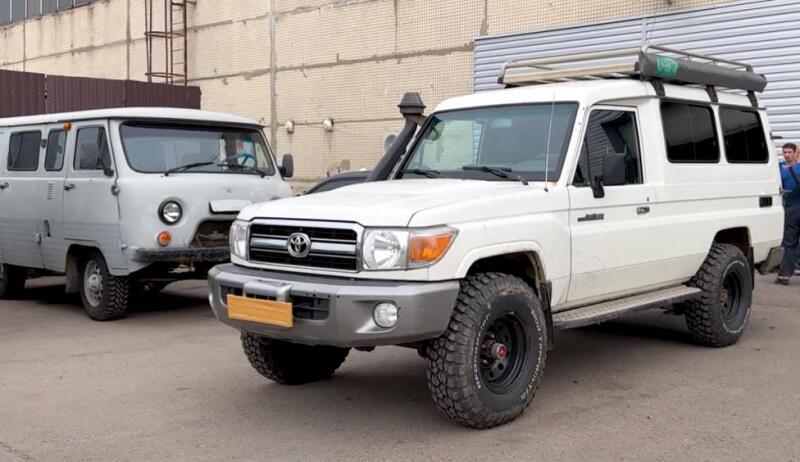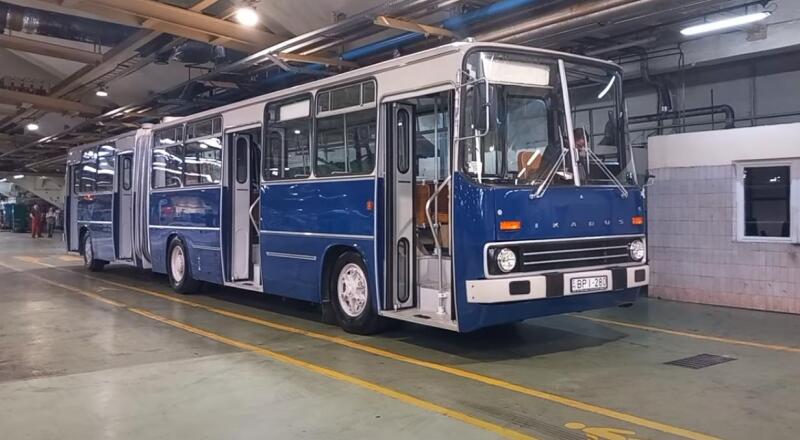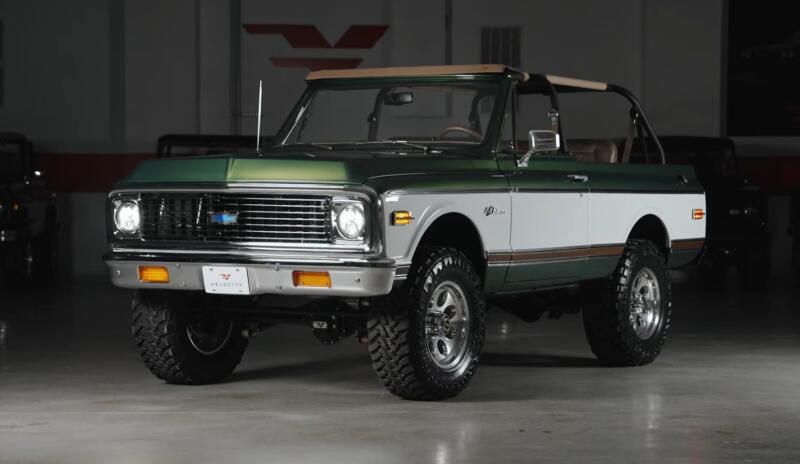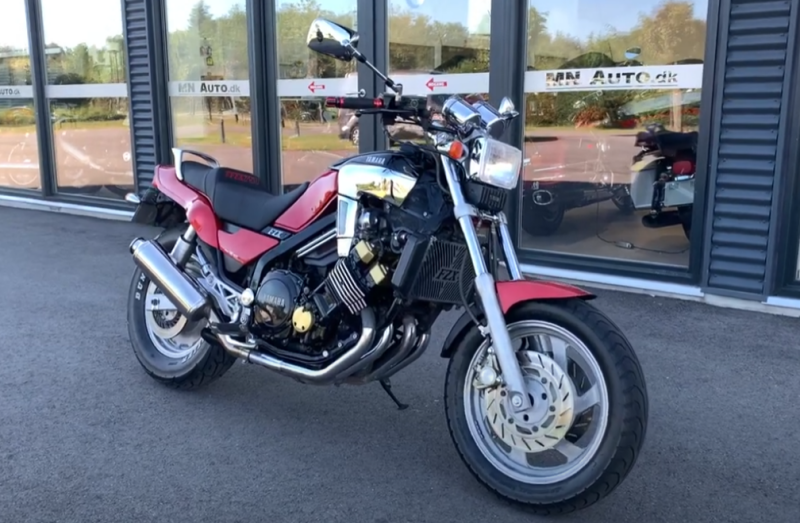Yes, even though today they have a slightly changed appearance, sometimes they have different units, but in essence they remain the same models that worried their car owners at the beginning of the second half of the last century. And, as a rule, most often such cars are produced not in their homeland, but in other countries, although there are exceptions, with which we will begin.
Toyota Land Cruiser 70
The car has been produced since 1984 and still pleases its fans. Of course, it would be unfair to say that the SUV has been produced unchanged since then. The car has undergone many modernizations - both quite large and minor.
 The 1984 model is still in service (2023). Photo: YouTube.com
The 1984 model is still in service (2023). Photo: YouTube.comOne of the most serious updates occurred in 2007. Then the “old man” was equipped with additional airbags, RB pretensioners, cruise control and a bunch of other driver assistants. The engine was also modernized, as required by environmental standards. It began to comply with Euro 5 standards. They also strengthened the frame. The changes are serious, but they are all “internal”: the external style remains the same, which is what fans of the brand demanded.
Chevrolet Lacetti model 2002
This car is not produced in Russia: but in Uzbekistan - please! Until January of this year, the local enterprise UzAuto Motors regularly produced an obsolete model. It was also redesigned, modernized, and restyled several times. Among the most serious changes, it is worth highlighting the installation of another engine - a one and a half liter B15D2, producing 107 “horses”. It is he who is under the hood of cars produced in the former Soviet republic. By the way, it was made in Uzbekistan at a GM branch. This unit was once equipped with the Chevrolet Cobalt.
 Modest in appearance, the Chevrolet Lacetti turned out to be a reliable car. Photo: YouTube.com
Modest in appearance, the Chevrolet Lacetti turned out to be a reliable car. Photo: YouTube.comInstead of the Aisin 81-40LE and ZF 4HP16 automatic transmissions that were on the “originals” with 1,6 and 1,8 liter engines, respectively, they now use a 6T30 automatic transmission. Among other improvements, it is worth highlighting the increased ground clearance, updated fenders, different optics, radiator grille and bumpers. By and large, the car is reliable and in demand.
 A site with finished products of UzAuto Motors. Photo: YouTube.com
A site with finished products of UzAuto Motors. Photo: YouTube.comSo why did its production cease at the beginning of this year? GM management stated that the “capacity of the enterprises” will be used to produce more current models. What to do - the time has come! In Russia, a Lacetti assembled in Uzbekistan costs approximately 1,5 million rubles.
Almost like Oka – Chevrolet Damas
An amazing little car that doesn’t want to leave the assembly line. If you dig as deep as possible, it turns out that the progenitor of this “miniminibus” was the Japanese Suzuki Every, which first entered the market in 1985. From 1991 to 1996, the car was made in South Korea under the “flag” of GM.
 All-wheel drive Suzuki Every 1985. Photo: YouTube.com
All-wheel drive Suzuki Every 1985. Photo: YouTube.comAnd from 1996 to 2014, the car began to be assembled in Uzbekistan at the UzDaewooAuto plant. Then the “long-suffering” minibus changed its manufacturer and began to be produced at KhorezmAuto GM Uzbekistan, where it stubbornly rolls off the assembly line today. Well, why not? The manufacturer says that the car is almost wildly popular.
 Uzbek Chevrolet Damas are waiting for their buyers. Photo: YouTube.com
Uzbek Chevrolet Damas are waiting for their buyers. Photo: YouTube.comBy the way, where does this love for miniaturization come from? After all, the length of the car is only 285 mm longer than that of the Oka, and the width of the bus is even inferior to it (!) by 20 mm. The roots of this phenomenon must be sought in Japan. In the last century, in order to buy a car, you first had to provide a certificate of availability of a parking space. However, if equipment was purchased with a length of less than 3,3 m and a width of up to 1,4 m with an engine capacity of less than 330 cubic meters, no document was required. That’s when “tight-fitting” cars came into fashion.
 Mini van for business from Chevrolet Damas. Photo: YouTube.com
Mini van for business from Chevrolet Damas. Photo: YouTube.comThe car has a simple design: the only comfortable options in the cabin are a radio and a heater. Gearbox – “mechanics”, engine capacity of 38 hp. With. consumes an average of 7,8 l/100 km: that is, everything that is needed for the car to drive reliably is available. And the price (in Russia) is pleasing: 970 thousand rubles. for a car with four and 990 thousand rubles. five-speed gearbox.
Nissan Junior in Iran
This refers to the 3rd generation pickup truck, released back in 1970 (production started in 1956). The car is not much younger than the Tehran company Zamyad, founded in 1963. Even today it successfully uses the developments of other countries, without bothering at all.
 Nissan Junior Model Q4, produced from 1962 to 1966. Photo: YouTube.com
Nissan Junior Model Q4, produced from 1962 to 1966. Photo: YouTube.comIn the case of Nissan Junior, they took its restyled version of 1979. At home in Japan, the pickup truck stopped being produced in 1982. But it’s there, and in Iran no one even thought of removing the car from the assembly line. At first they produced pickup trucks with a 2-liter engine, then (since 1986) production was transferred to another company - Saipa. Here they installed a Nissan/Datsun 720 engine on the car. However, in 1998, for some reason, the pickup truck returned back to Zamyad: the east is a delicate matter!
 Nissan Junior in Iran. Photo: YouTube.com
Nissan Junior in Iran. Photo: YouTube.comThe rapid development of the Chinese automobile industry also affected this “old man”: in 2008, a 93-horsepower FAW CA4D28C4-1 diesel engine from China was installed on it. According to the automaker, with this unit the pickup truck develops 160 km/h. The names also changed: the most recent is Shooka. A car with a half-century history is even exported to Kenya under the name Kifaru. However, our “loaf”, which is not inferior in age, is also bought abroad.
"Delica the Immortal"
This car, the 2nd generation of which began to be produced in 1979, not only has not left the production line: today’s manufacturers are confidently increasing their circulation. In the Philippines in 2020, an updated version of the car was released in the amount of 200 thousand copies! And this despite the fact that the Mitsubishi Delica stopped being produced as a minibus in 1986, and as a truck in 1994. True, until 1997, Hyundai produced an on-board copy called Porter, which was well known in Russia. It seemed like that was all, but no!
 Hyundai Porter was often seen on the roads of the Russian Federation in the 90s. Photo: YouTube.com
Hyundai Porter was often seen on the roads of the Russian Federation in the 90s. Photo: YouTube.comMitsubishi Motors Philippines picked up the falling banner and set up production in its country. However, it all started back in 1987, when this company began producing the Mitsubishi L300 Versa Van minibus (until 2012) and chassis. Local manufacturers turned the latter into anything: from trucks to public transport, ambulances, etc. For example, in 2014, one of the companies (Centro Manufacturing), which was engaged in the production of automobile bodies, suddenly released the XV Mikrobus. In fact, this is another version of the L300.
 Mitsubishi L300 Versa Van in the Philippines. Photo: YouTube.com
Mitsubishi L300 Versa Van in the Philippines. Photo: YouTube.comIn 2017, Mitsubishi Motors Philippines again paid attention to the minibus: it began to be equipped with a modified diesel engine. And in 2019, they replaced it with a 4N14 CRDi engine, which meets Euro 4 standards. And this, starting from 1997, is the most significant change. Externally, the car remained the same: in order to somehow distinguish it from previous versions, the front end, or more precisely, the radiator grille, was slightly changed.
 One of the latest versions of the Mitsubishi L300 in the Philippines. Photo: YouTube.com
One of the latest versions of the Mitsubishi L300 in the Philippines. Photo: YouTube.comIn 2022, the minibus, the production volume of which, as mentioned above, exceeded 200 thousand units of equipment, began to be imported to Southeast Asia. The car has especially taken root in Indonesia. They also sold a minibus in Russia, but then for some reason they stopped: it was in vain - such a car would have worked for us. However, maybe it will appear again, who knows - today everything in the world is changing very quickly.
Results
Of course, these are not all long-livers in the world of the automotive industry. You can also recall UAZs and Nivas, which have been modernized for decades. Nevertheless, these cars are being bought – it’s a fact. Otherwise they would not have been produced.










